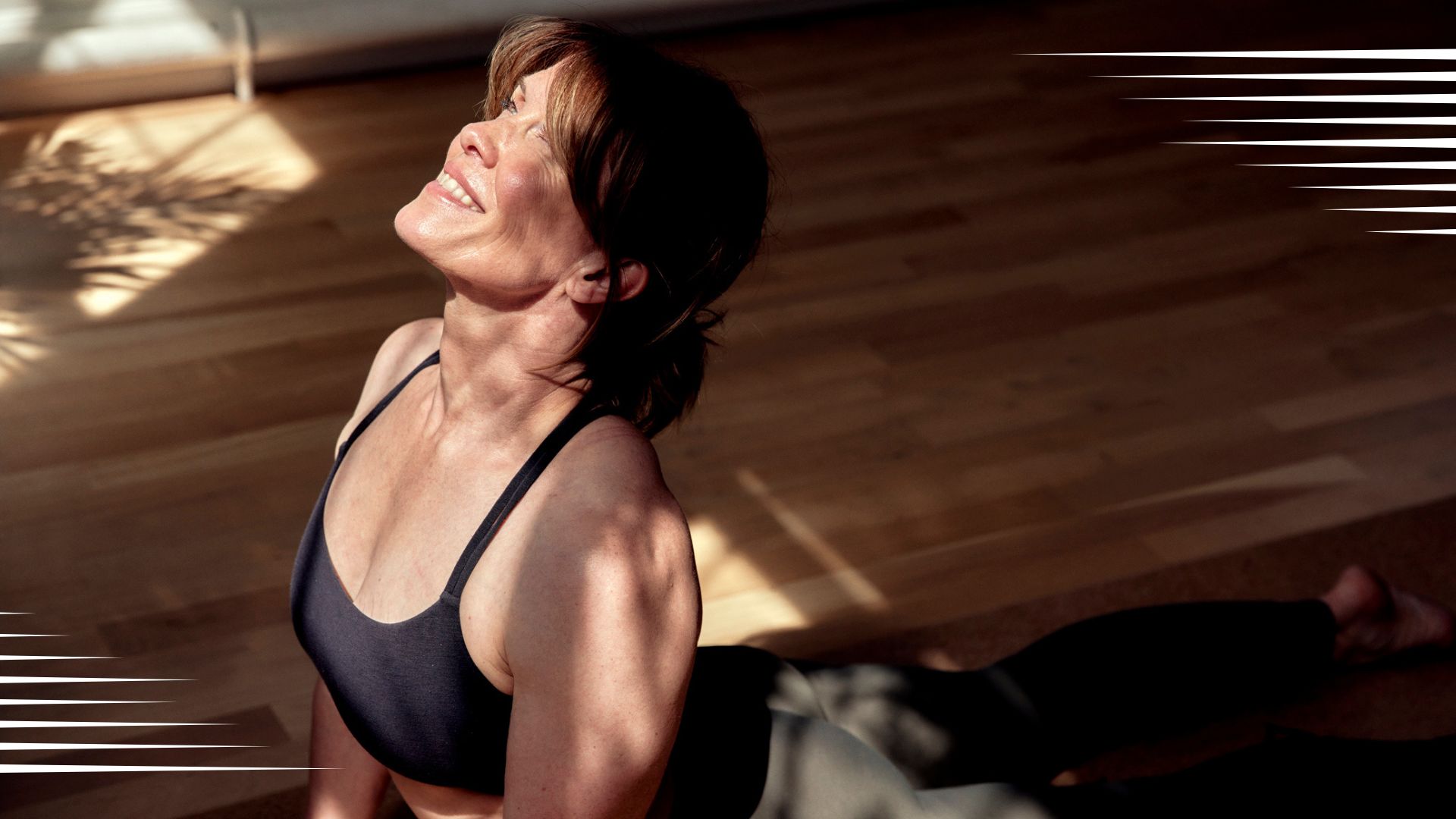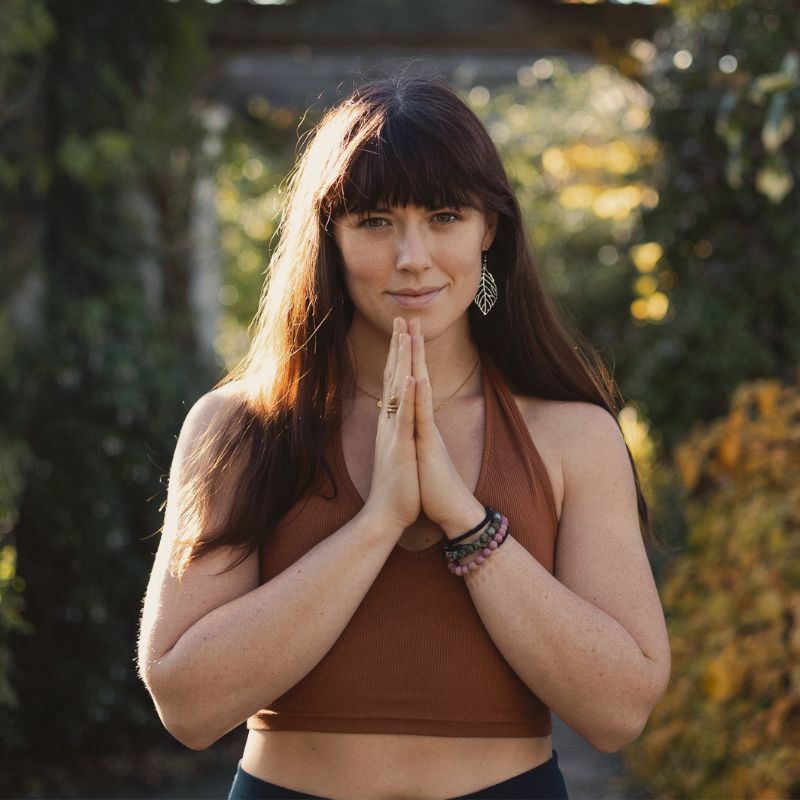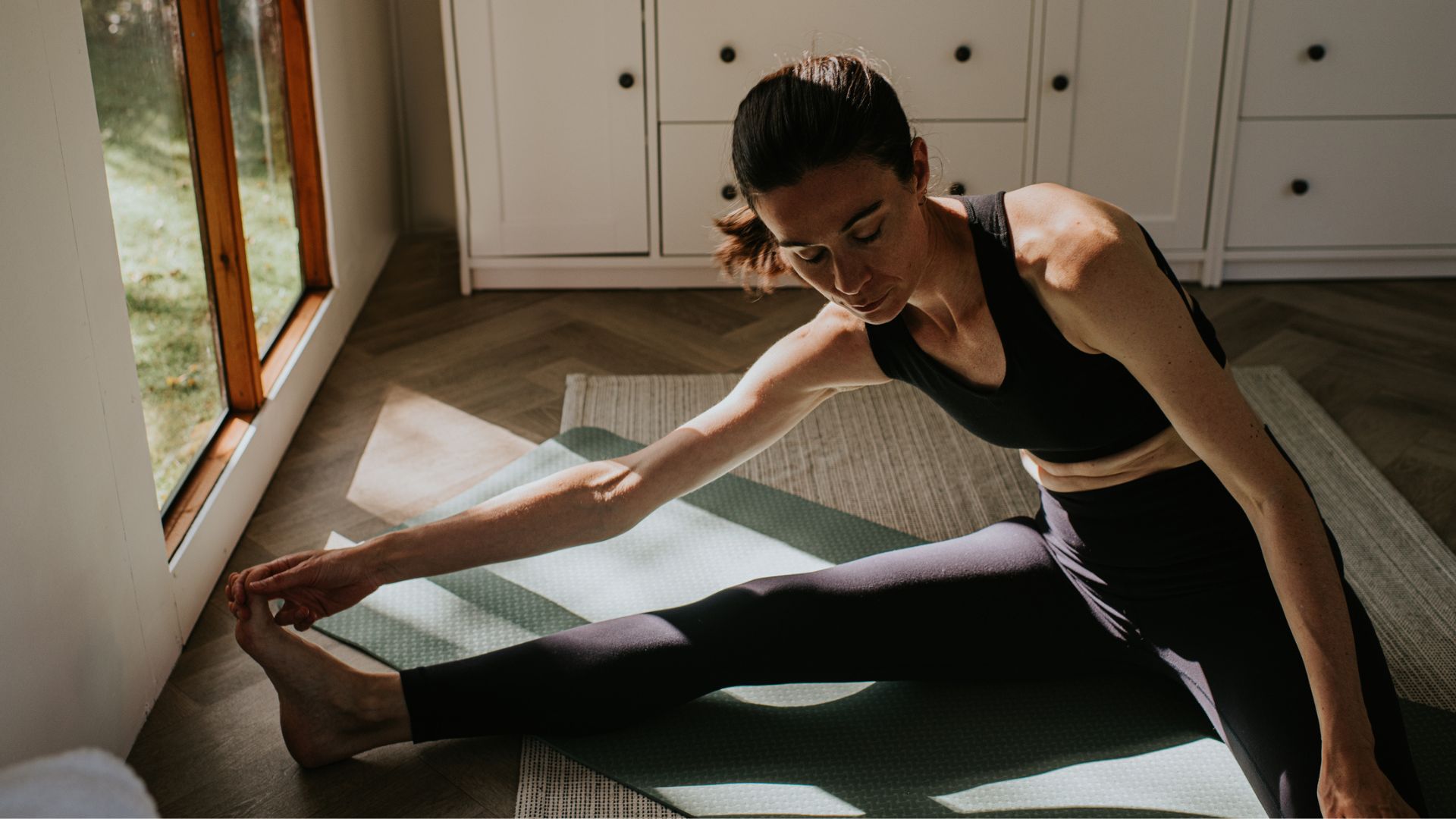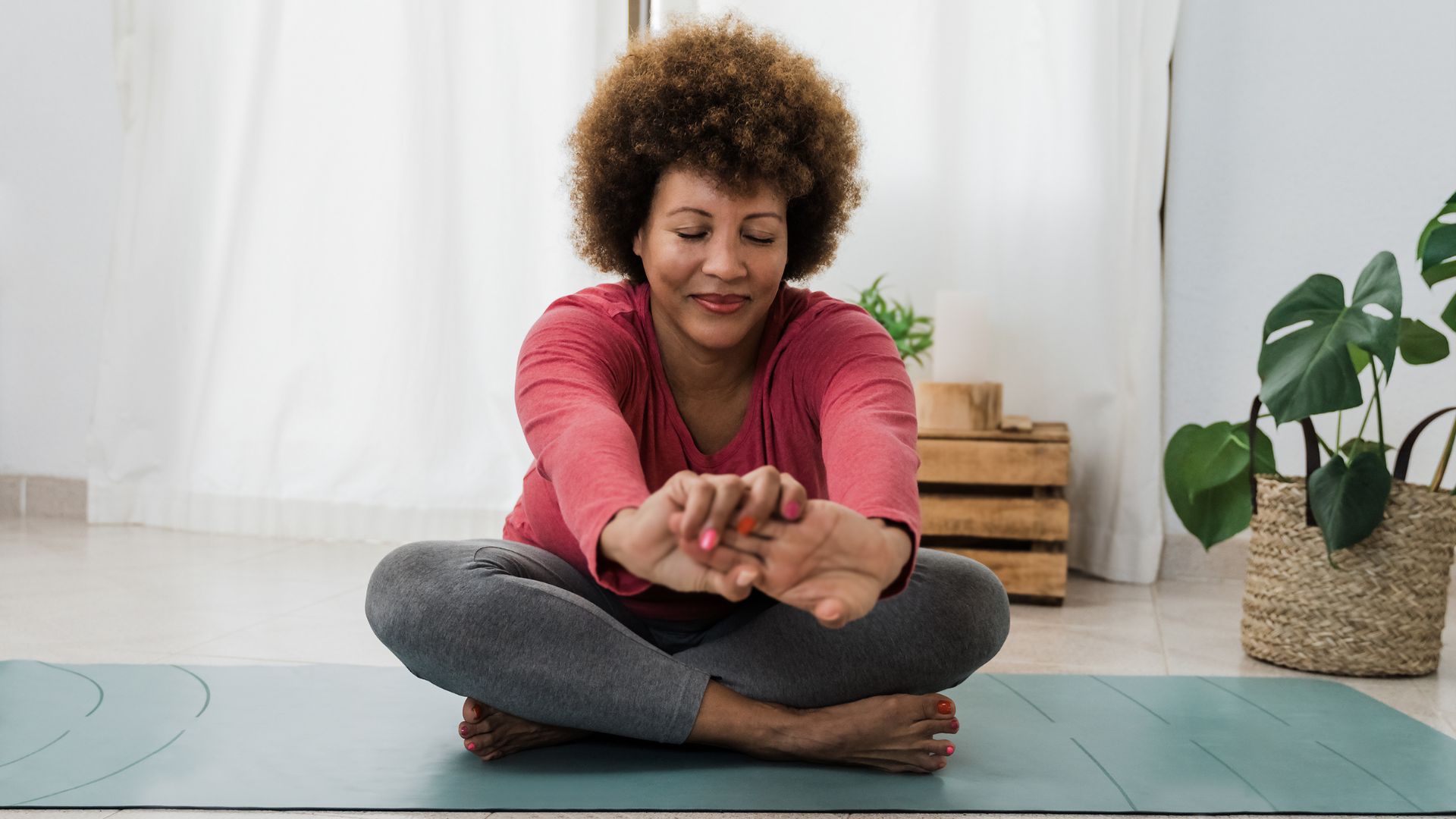Pilates vs yoga - what are the key differences between these popular workouts?
Instructors reveal the key differences between Pilates vs yoga to help you choose the best activity for your lifestyle


Ali Horsfall
Many people find themselves weighing up Pilates vs yoga when deciding between the two. At first glance, they both seem very similar. If you're looking to improve your flexibility and core strength and reduce stress, it can be argued that both workouts are just as brilliant as each other.
What's more, the beauty of both yoga and Pilates is that anyone - regardless of age or ability - can simply roll out one of the best yoga mats, and start reaping the benefits from the comfort of their own home.
"Both Yoga and Pilates are fantastic for strength, flexibility, mindfulness, and relaxation, so you really can’t go too wrong with either one. In my opinion, the strength I build in Pilates helps with my endurance and stamina in yoga," says Caroline Lucas, a certified instructor, yoga, and meditation expert. So, what sets these two workouts apart? And is one better for you than the other? From wall Pilates to yoga for weight loss, this is what the experts want you to know about the two practices, which one will work best for you, and all you need to get started.
What is the main difference between Pilates and yoga?
The main difference between the two is that yoga focuses more on flexibility and breath control with a spiritual background, while Pilates focuses on rehabilitation, improving muscle tone and core strength.
"Yoga originated in India over 5000 years ago as a religious practice, to help people connect to the spiritual through movement and meditation. As such, while yoga is a physical pursuit, its purpose is much more about the connection of mind and body," says Lucas, who works with Karma Studios.
"Pilates, on the other hand, was developed more recently in the 20th century by German-born Joseph Pilates, who was looking for a set of exercises to help rehabilitate people by improving their strength and flexibility," she says.
Caroline Lucas is a certified yoga teacher and meditation expert with over 12 years teaching the practice. She offers classes in West Wickham, Kent, and online, allowing practitioners to work with her from anywhere in the world.
Pilates vs yoga
1. Spirituality
As noted, yoga is a practice that dates back thousands of years, with deep spiritual roots, whereas Pilates is about 100 years old.
Sign up to our free daily email for the latest royal and entertainment news, interesting opinion, expert advice on styling and beauty trends, and no-nonsense guides to the health and wellness questions you want answered.
"Pilates [even Pilates for beginners] has a primary focus on movement and control of the body. In certain, more traditional yoga practices, the movement wouldn't feature at all, and the focus would be the mind. Pilates is predominantly focused on your relationship with body, breath and movement," says Jenny Haynes, mind and body trainer at Third Space Canary Wharf.

Jenny Haynes is a yoga, Pilates, barre and breathwork facilitator based in London, UK. Her passion lies in connecting people to their body, mind and breath in an accessible, creative and inclusive way. Jenny has worked as Lead Mind and Body Trainer for Third Space London, and has worked with Liverpool FC, Fearne Cotton's Happy Place, Nike, Virgin Atlantic and Verve Festival.
2. Rehabilitation
Pilates has a strong focus on rehabilitation, thanks to the origins of the activity. As Lucas explains, during the latter part of World War I, Joseph Pilates served as an orderly in a hospital on the Isle of Man where he worked with patients unable to walk. He attached bed springs to hospital beds to help support the patients' limbs, leading to the development of the 'Cadillac' - his most famous piece of equipment.
"Much of his equipment, although now adapted, is still in use today in many Pilates Studios across the world," she says.
"This focus on healing and rehabilitation is what makes Pilates an excellent choice for people who have been injured or are someone simply looking to strengthen their entire body by focusing on their posture and core strength." Many people use Pilates for strength training for this exact reason.
3. Principles
Both Pilates and yoga require control, breathwork, flow, and concentration, but the use of them in practice and the reasons why we use them are very different, the trainers say.
"Pilates is primarily focused around six principles: Breath, Precision, Flow, Concentration, Centering, and Control. Yoga takes influence from ancient text like the Bhagavad Gita, and guidance from the Yama's and Nayamas (guides for life), The Kleshas (what can cause suffering) and others," says Haynes.

4. Purpose of the practice
The main reason why each of these practices was created is very different, so their goal is naturally going to be different too. "Yoga can be seen as using movement and breath as a tool to go inside yourself, accessing a deeper state of knowledge, spirituality, connection, and awareness," says Haynes. It's one of the key benefits of yoga and those looking to learn how to beat stress or recover from burnout may find this particular activity very useful.
"Pilates uses movement and breath to work with the body, and physicality as a primary motivator," says Haynes.
5. Mental health
Both Pilates and yoga - and any kind of exercise for that matter - can be beneficial for maintaining our mental health. "During times of stress the 'fight or flight' system is activated, setting off many things in the body, including the release of chemicals like cortisol and adrenaline. There is a spike in the immune system and a shut-down of the digestive system," says yoga instructor Hannah Barrett.
However, after just a few weeks, practising Pilates every day or yoga every day or a couple of times a week can make a real difference. "Over time, you may notice your stress levels are lower, your muscles get stronger and more toned, and you're more flexible. Your digestion improves and your cardiovascular health also increases," she says.
Studies from New York University Grossman School of Medicine show a regular yoga practice can be as effective as seeing a therapist for some people with anxiety. Another study from Smith College reported participants had lower levels of stress after developing a regular yoga practice than those doing other forms of exercise, thanks to yoga's meditative element.
Yoga gives you a chance to quieten the mind, connect to your body, and activate the parasympathetic nervous system which helps you to “rest and digest".

What are the different styles of yoga?
There are many different types of yoga, each with sequences practised at different paces and levels of intensity. Yoga instructors may also introduce their teaching style to a class. Here are a few of the most popular styles:
- Hatha: A gentle form that combines static poses and different breathing techniques. It's considered one of the best types of yoga for beginners.
- Iyengar: Focuses on precision, detail, and the alignment of the body. Participants can use blankets, yoga blocks, and straps for support.
- Yin (or restorative): Involves slow movements held for longer, to offer the body a chance to engage the parasympathetic nervous system.
- Ashtanga: A set of 6 specifically sequenced poses, performed in the same order during every class. Participants breathe and flow through each move to create heat internally.
- Vinyasa: Fusing breath and movement, this form of yoga focuses on rhythm. It's popular with those who love cardio exercise, like running, as it involves constant movement. When people talk of yoga as a workout, this is the kind of session they mean.
As Ashtanga and Vinyasa yoga are a little more intense, you may benefit from using one of the best thick yoga mats in these classes to give your body and joints a little more support, particularly if you're starting yoga for back pain.
What are the different types of Pilates?
Different Pilates schools have adopted Joseph Pilates' method over the years. However, when his guiding principles and original exercises are followed exactly, it is known as Classical Pilates or Traditional Pilates. This can include:
- Matwork Pilates: A total of 34 strength training movements make up Joseph Pilates' original sequence that is performed on a mat.
- Reformer Pilates: This medieval-looking piece of apparatus designed by Joseph Pilates improves strength and stability by offering resistance. With Classical Pilates, a specific sequence of exercises will be followed on the reformer. Other equipment may be used in Classical Pilates including the Cadillac, the chair and the barrel. This is one of the best exercises to burn belly fat, if you practice regularly and eat healthy alongside your fitness routine.
- Contemporary Pilates: Blends the work of Joseph Pilates with some adapted movements based on new learning and research on body biomechanics. Teachers of the modern method have more flexibility to switch up sequences and the apparatus used. Wall Pilates is an example of this.
- Clinical Pilates: When Pilates is used for rehabilitation following an injury or surgery, it is known as Clinical Pilates. Pilates exercises will be modified by a physiotherapist to suit a person's specific physical needs.
When weighing up Pilates vs yoga for your lifestyle, it's important to know that (despite what many suggest) one is not better than the other. "I'd say they are two distinctly different styles of movement practice, with different purposes," says Haynes. "I encourage clients to find the style that resonates with them, and if you enjoy both, a mix of practices in your routine can be beneficial. The common factor is that they're both low impact, which is sometimes why I think they have been bracketed as similar in the past, but aside from that, each stands strong as its own concept."

Grace Walsh is woman&home's Health Channel Editor, working across the areas of fitness, nutrition, sleep, mental health, relationships, and sex. She is also a qualified fitness instructor. In 2025, she will be taking on her third marathon in Brighton, completing her first ultra marathon, and qualifying as a certified personal trainer and nutrition coach.
A digital journalist with over seven years experience as a writer and editor for UK publications, Grace has covered (almost) everything in the world of health and wellbeing with bylines in Cosmopolitan, Red, The i Paper, GoodtoKnow, and more.